 GeSCI gives strategic advice to Education ministries world over on better management of ICT resources in school education
GeSCI gives strategic advice to Education ministries world over on better management of ICT resources in school education
Dr Jyrki Pulkkinen
CEO, Global eSchools & Communities Initiative (GeSCI)
Please tell us about your journey with the development of ICT in education.
My background is that of an educationist, as a researcher, research manager and an Assistant Professor of education, with over 20 years of experience. In the 1990’s, we lived in pioneering times, when it came to the use of Information Communication Technology (ICT). When I came across ICT, I started programming for educational needs. We experienced many new technologies and applied these for training teachers. We facilitated skill development not only for the primary and secondary school teachers, but also for the adult educators, university teachers, lecturers in education. At that time we also wanted to understand what will be the impact of ICT for the school education system, not only as a tool in your own classroom, but how it will reform the whole education system. As an Assistant Professor in the University of Oulu in 1996, I established a research unit of educational technology. It was the first of its kind in Finland, and was totally dedicated to educational technology.
How did you get other universities on-board, within Finland, for furthering the early ideas on ICT into learning and practice?
Previously, if you had one year curriculum you had your students over there in the classroom, used technologies for teaching them, sometimes assessing or video conferencing, and you paid all the costs and developed all the curriculum. We tried to change that. We decided among three universities – Helsinki University of Technology, University of Jyvaskyla and University of Oulu – to share all the costs and implementation of ideas. We decided to have one study group in each of these universities. The three universities constituted a network and contributed money, ideas for developing curriculum through a year long programme. With this network and idea of sharing costs of training we managed to have large-scale impact in terms of the number of students we covered. We used technology as a tool, but it also provided a platform for us to train more teachers in more product areas.
How was this model of networking and decentralising of ICT educational training different from other contemporary models?
We never established a virtual university at one university in Finland. We came up with a network of universities, and his finally grew into a national network of Finland. There was a Secretariat or a development unit at the Ministry ofEducation. In UK, they established one university and tried to run it as a business, which ultimately went bankrupt. Many of the virtual universities met this fate in the late 80s and early 90s. The Finnish Virtual university model has survived so long and is still functioning because of their network model.
Can you share some of your critical introspection about ICT in ducation, particularly in the context of developing countries?
In 2000, I went to South Africa as a consultant for the National Department of Education for capacity building model of African teachers. In Finland everything was online, but in South
Africa, I asked for offline content as it was too expensive to be online. The economic environment was absolutely different. Even where technologies were available, teachers could not be using it constantly as it proved too expensive for the schools. Even the teachers there lacked proper training. So we had to develop a different model. I was in a state of confusion and getting critical.
How do you view the specific case of India?
I have been attending many global workshops on ICT and innovations, saying that everybody should copy the Indian model. Even Africa wants to copy Indian model! I assumed its because we have a booming outsourcing business in ICT and high-tech in Chennai and Bangalore.
Coming to application of ICT in education, I haven’t seen enough to make any evaluation about the situation in India. During my visits to couple of schools, I saw children looking at computer screens and copying everything on to otebooks and memorising what they have seen. Then I felt the problem was not technology, but the methodology adopted by the teachers in the learning process. They were repeating the same mode of teaching which they did in the traditional classroom of chalk and board. So in India it is not a technical problem,
but a pedagogical one. This is my substantive evaluation at the moment.
What kind of model do you suggest for the Indian environment?
Research has shown the world over that people learn the best through a flexible and collaborative mode of learning. Children are learning together, they can communicate together via Internet or face-to-face. They have to collaborate, not memorise. They have to study, solve problems, make conclusions, and develop something new. I was surprised to hear that in stateowned schools, every child learns the same thing, same day, in a same manner. This is not at all innovative. We have other methods too, like the ‘blended mode learning’, where various children learn different things at the same time in a classroom. A school is like a social system, which has to be changed on the whole. We have to address the school management and also the educational system at all levels, from the ministers to teachers. If you want to use technology efficiently with minimum investment and have the best results too, you should invest in the educational management system. That is the best way of introducing ICT in education. After management comes the teachers. The teachers should know how to implement technology in their pedagogy. Otherwise the investments made by the school will go waste. How do you see the role of GeSCI in India in the context of current global education? GeSCI gives strategic advice to Education ministries world over on better management of ICT resources in school education. We advocate the importance of having an CT infrastructure in education as it is needed for development of the social and economic parameters of a nation. But to accomplish it there has to be a proper plan. This is where a visionary strategy comes in, and the need for a country-specific ICT policy. India is challenging, because it has a third world economy and at the same, a developed country’s problems. So you have a variety of problems and challenges here. Basically, the Indian experience has been a good exercise or GeSCI and hopefully a useful one for the Indian government as well. However, in the coming years GeSCI would like to contribute to other countries in South Asia. We are developing regional activities in other countries in the region also. We are serving India from a different angle, not as a bilateral country programme but inviting it to be part of the larger community of ICT in education and GeSCI community in South Asia. We want India to share their experiences in policy making and ICT in education, with other South Asian nations. The Asian scenario is different from, say, Africa. That is why we are not developing any country programmes in Asia but rather going for facilitation of knowledge sharing activities in the region. In Africa, we have country programmes because they don’t have the same level of knowledge base or expertise as in India. The government and the private sector have an engagement in India’s education sector.
How do you view the coming together of different stakeholders?
Every stakeholder has a point of view and interest. They have different entry points to the same issue. But the government cannot provide all services and infrastructure, they need private sector for that. The idea is to create a kind of partnership where there is a confluence of two sides to bring in all round development. But at the same time, the private sector should not be given a free hand as then it goes on an easy profit making mode. This kind of participatory policy making may be new in India, but back home it is a norm.
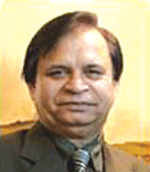 PPP is most essential to bring in quality in the higher education system. Governments can ensure PPP through an appropriate policy. However, PPP should not impose academic restrictions
PPP is most essential to bring in quality in the higher education system. Governments can ensure PPP through an appropriate policy. However, PPP should not impose academic restrictions
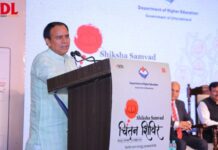




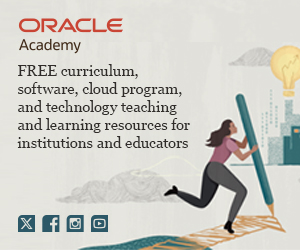

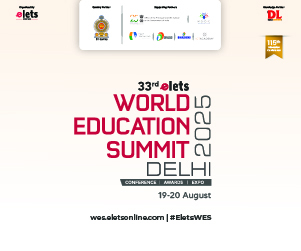

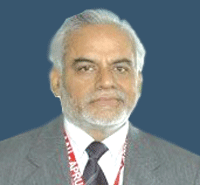 With the new economic order, the disparity between rich and poor will widen, particularly in the area of higher education. The quality of education in the rural areas is far below than that being offered in urban India
With the new economic order, the disparity between rich and poor will widen, particularly in the area of higher education. The quality of education in the rural areas is far below than that being offered in urban India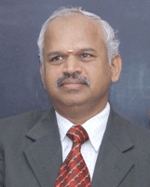 Dr R Radhakrishnan
Dr R Radhakrishnan
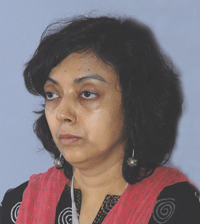 PPP is the only way out for introducing, implementing and sustaining use of technology in school education
PPP is the only way out for introducing, implementing and sustaining use of technology in school education








